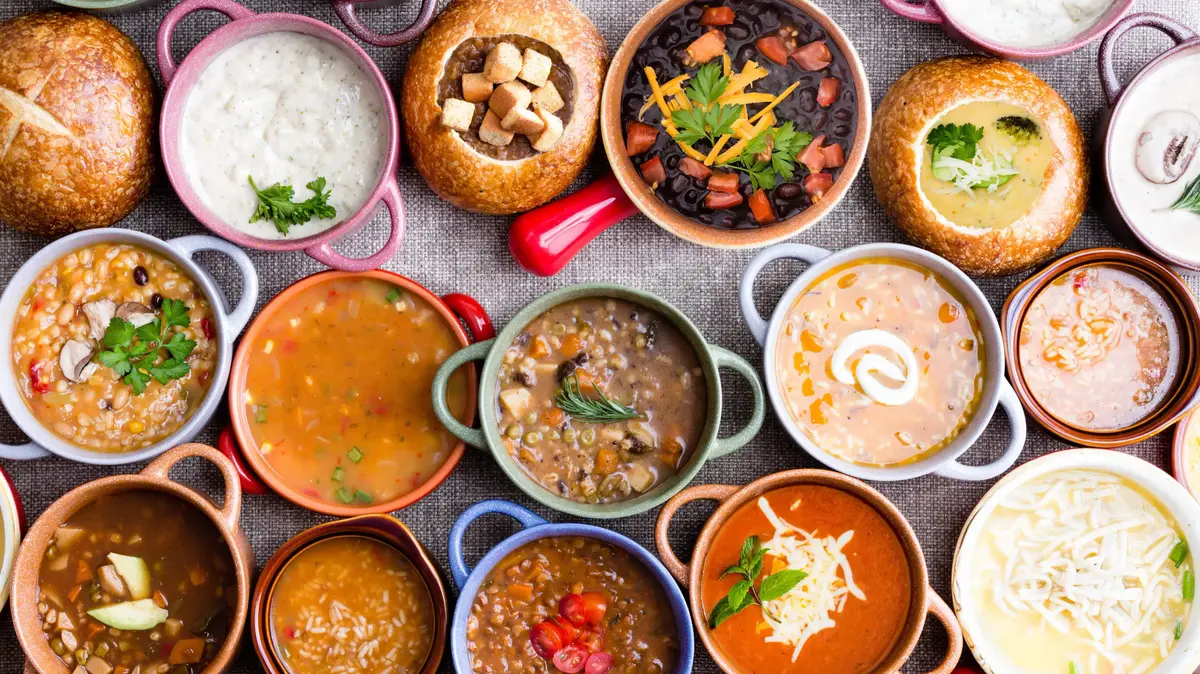AP, Reuters, Getty Images, Shutterstock
You must have noticed that when the temperatures drop and darkness falls, the feeling of hunger increases and the more often you wander to the kitchen to look for something to eat.
In the winter we eat more, especially in the Israeli winter that comes in an instant, after long months of heat and without a real fall season to soften the transition and prepare the body (and mind) for the cold season.
This feeling of increased hunger is not related to seasonal depression that makes you want to take comfort in something.
This is a physiological matter - when it's cold our body needs to warm up, and for that it needs energy.
He obtains this energy through calories, so we eat more.
It's a matter of survival rooted in ancient times of humanity, when humans were required to go outside in the cold to get food, and only serious hunger could make someone do that.
Another physiological factor is the light outside, or rather the lack of light outside.
The transition to winter time and the early darkness causes us to enjoy fewer hours of light in the winter and then the body produces less serotonin - a neurotransmitter that is mainly known as the regulator of our mood, and is also responsible for our feeling of satiety.
When the amount of serotonin decreases, you feel more hungry, and especially the need for carbohydrates.
So if it's already clear that in the coming weeks you will eat more, at least don't eat crap.
Here are some nutritious and healthy recommendations for winter dishes that will warm you up:
Soups in many colors
The soup will warm you up, restore fluids to the body that it lacks in the cold season and will also satisfy you.
A variety of soups (Photo: ShutterStock)
A bowl of soup is an excellent option for a meal in the winter - it will warm you up, restore fluids to the body that it lacks in the cold season, and also satisfy you.
So that the soup is also healthy, it is important to observe some rules: avoid using monosodium glutamate - the sodium salt of glutamic acid that creates the addictive umami taste, replace the soup powder with vegetable or meat stock, add fresh herbs for vitamins and minerals, and legumes and whole grains to slow down the absorption of sugar in the blood and to give a long-lasting feeling of satiety (just don't cook the vegetables in the soup for too long, so as not to lose their nutritional values).
For all the soup recipes in Walla!
I eat
orange soup
A soup rich in orange vegetables (carrots, sweet potato, pumpkin, and sweet potato) will help strengthen the digestive system and the immune system, and if you grind it - a version that is usually also more popular with children - you will improve the body's ability to absorb beta-carotene from the orange vegetables, from which the body produces vitamin A, which is Antioxidant.
Antioxidants help the body deal with cancer cells and atherosclerosis.
Green soup
For people suffering from high blood pressure, it is recommended to eat a soup rich in green vegetables, with an emphasis on green leaves: parsley, dill, coriander, spinach, celery, cabbage and more.
The green leaves are rich in chlorophyll which is a diuretic and rich in potassium and is also known for its ability to balance sodium levels in the body and prevent high blood pressure.
The family of green leaves is also rich in vitamin C, magnesium, calcium and other minerals, which contribute to the health of the heart and arteries.
Legumes and whole grains can be combined in the soup, especially whole basmati rice, which contributes to balancing blood pressure levels.
Even the steam that rises from it during cooking is good for health.
Chicken soup (Photo: ShutterStock)
Fresh
soup Chicken soup (preferably from organic chicken) is much more than the Jewish grandmother's medicine.
Studies have shown that it affects the movement of neutrophils - the white blood cells that are released in large quantities during viral infections and cause phlegm and a stuffy nose.
Certain ingredients in chicken broth work in a similar way to some cold medicines, stopping the release of these cells.
In addition, amino acids that are secreted from the chicken during cooking are similar in terms of their chemical composition to some of the prescription drugs for the treatment of respiratory problems.
The ingredients in this soup may prevent and even alleviate osteoarthritis, osteoporosis, digestive system problems and also autoimmune diseases.
Even the steam that rises from the soup during cooking has a positive effect on those who suffer from breathing difficulties and coughing.
The chicken in the soup contains sodium and the vegetables that are usually added to it (zucchini, carrot, onion, pumpkin, potato, parsley and dill) contain potassium - two essential substances for the body, especially in winter, when most people eat less fresh vegetables.
Casserole dishes
When we say pot dishes, we mean a dish cooked for a long time on a relatively low heat source, which condenses and unites the flavor of all its ingredients and gives the final dish a taste that is greater than the sum of its parts.
It is usually a meat dish accompanied by a variety of vegetables and legumes.
It is highly recommended to soak the legumes in water before cooking, to reduce gas and shorten the cooking time.
You should cook them in advance in large quantities and freeze in small portions.
Another famous Jewish food chowder, whose name alone makes you want to sit on a cold and rainy Saturday, is the chowder (or cholent
, sahina, tabit - just take your pick).
Usually the soup combines carbohydrates from the cereal group (semolina, rice or wheat) and protein (meat or egg).
Adding legumes such as white beans or chickpeas will enrich the dish with additional protein.
Note that this is a dish that can contain a high amount of calories, so it is recommended to use canola oil for cooking, be satisfied with one portion and add fresh vegetables with a low caloric density to it that will contribute to the feeling of satiety.
Immediately makes you want to sit at home, cold and rainy.
Chowder (Photo: ShutterStock)
Potting root vegetables The root
of the plant that grows underground (and is usually called root vegetables) contains a variety of essential vitamins and minerals for the body's functions, due to being a food reserve used for plant growth.
A dish that contains root vegetables can be a meal in itself or a nutritious addition to a meal, for example of carrots, sweet potatoes and beets.
The sweet potato and carrot are a good source of vitamin A which is used as an antioxidant and helps prevent cancer.
The beetroot contains a large amount of folic acid and potassium and also helps prevent constipation.
The winter legume stew
is an excellent opportunity to incorporate legumes into the diet, which are considered one of the healthiest and most nutritious foods, but in the summer we don't eat much of them (except for the eternal hummus).
All legumes are rich in protein and dietary fiber, and some are also very rich in iron and other vitamins.
In addition, they are a main alternative source of protein to meat, are low in fat and contribute to a feeling of satiety over time.
A variety of types and flavors.
Legume dishes (Photo: ShutterStock)
In the legume group you can find a variety of beans (white, red, black, spotted, mash and broad beans), lentils (green, orange, black), chickpeas, beans, peas and soybeans.
The chickpeas are rich in many minerals such as zinc and manganese, protein, dietary fiber, iron and even calcium.
Lentils are rich in protein, iron, calcium and various vitamins and it is especially recommended to include them in the menu of vegans and vegetarians.
To get a higher quality protein, it is recommended to combine the lentils with grains, for example in Majedra.
Among the types of beans, white beans are considered to be the richest in calcium (90 mg per 100 grams of cooked beans), and contain additional nutrients that contribute to bone health, such as potassium, magnesium, copper, zinc and manganese.
Before choosing the legumes for the stew, remember that hummus, The red and black beans, the pulses and the peas must be soaked for an average of 8 hours and also cooked well. The orange and green lentils do not need to be soaked at all, and the black lentils need to be soaked for a maximum of 20 minutes.
health
Nutrition and diet
Tags
Winter dishes
Casserole dishes
soup
Legumes
Root vegetables
Broth
Chicken Soup
Orange soup









